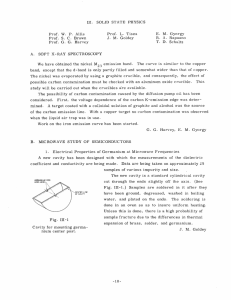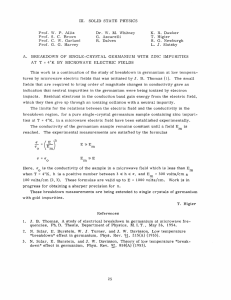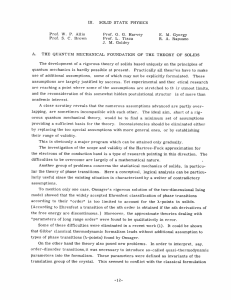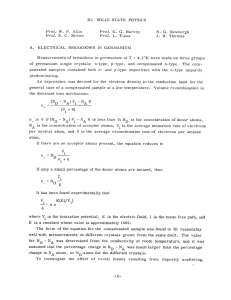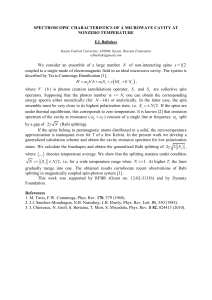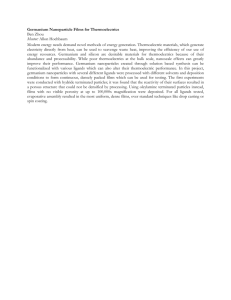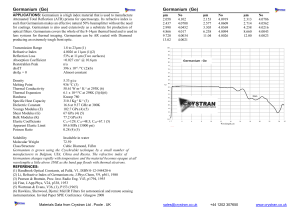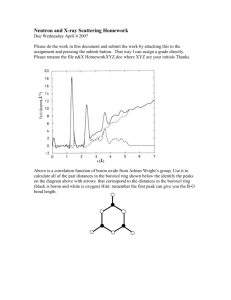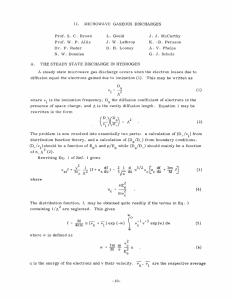III. SOLID STATE PHYSICS J.
advertisement
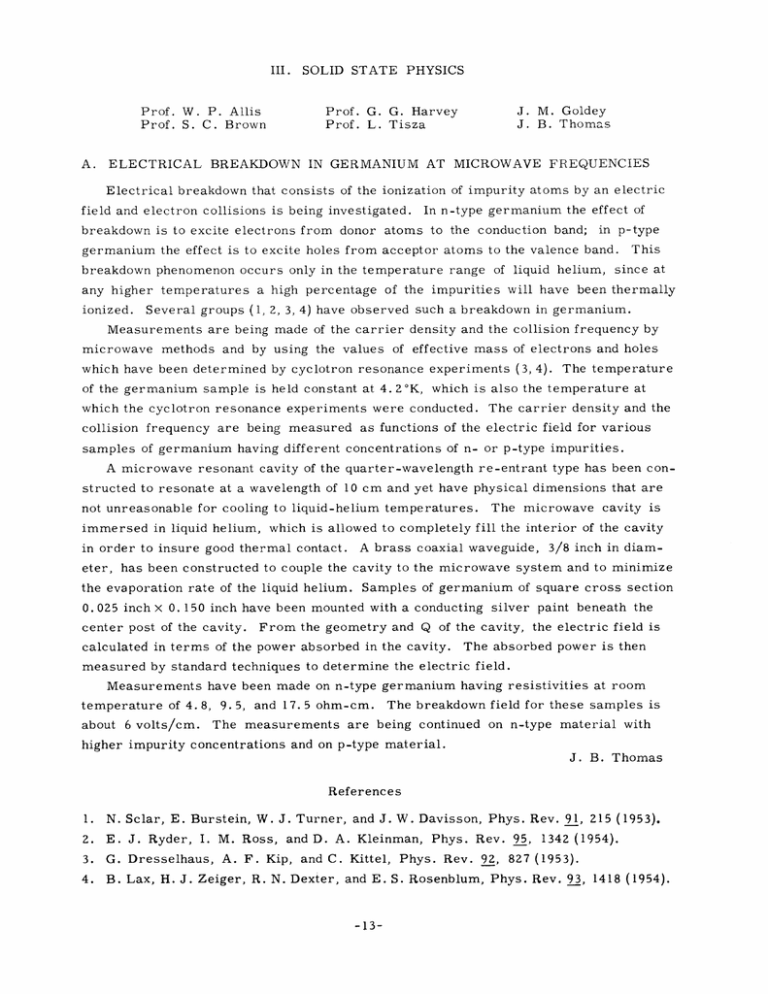
III. J. J. Prof. G. G. Harvey Prof. L. Tisza Prof. W. P. Allis Prof. S. C. Brown A. SOLID STATE PHYSICS M. Goldey B. Thomas ELECTRICAL BREAKDOWN IN GERMANIUM AT MICROWAVE FREQUENCIES Electrical breakdown that consists of the ionization of impurity atoms by an electric field and electron collisions is being investigated. In n-type germanium the effect of breakdown is to excite electrons from donor atoms to the conduction band; in p-type germanium the effect is to excite holes from acceptor atoms to the valence band. This breakdown phenomenon occurs only in the temperature range of liquid helium, since at any higher temperatures a high percentage of the impurities will have been thermally ionized. Several groups (1, 2, 3, 4) have observed such a breakdown in germanium. Measurements are being made of the carrier density and the collision frequency by microwave methods and by using the values of effective mass of electrons and holes which have been determined by cyclotron resonance experiments (3, 4). The temperature of the germanium sample is held constant at 4. 2 K, which is also the temperature at which the cyclotron resonance experiments were conducted. The carrier density and the collision frequency are being measured as functions of the electric field for various samples of germanium having different concentrations of n- or p-type impurities. A microwave resonant cavity of the quarter-wavelength re-entrant type has been constructed to resonate at a wavelength of 10 cm and yet have physical dimensions that are not unreasonable for cooling to liquid-helium temperatures. The microwave cavity is immersed in liquid helium, which is allowed to completely fill the interior of the cavity in order to insure good thermal contact. A brass coaxial waveguide, 3/8 inch in diam- eter, has been constructed to couple the cavity to the microwave system and to minimize the evaporation rate of the liquid helium. Samples of germanium of square cross section 0.025 inch X 0. 150 inch have been mounted with a conducting silver paint beneath the center post of the cavity. From the geometry and Q of the cavity, the electric field is calculated in terms of the power absorbed in the cavity. The absorbed power is then measured by standard techniques to determine the electric field. Measurements have been made on n-type germanium having resistivities at room temperature of 4. 8, 9.5, and 17. 5 ohm-cm. about 6 volts/cm. The breakdown field for these samples is The measurements are being continued on n-type material with higher impurity concentrations and on p-type material. J. B. Thomas References 1. N. Sclar, E. Burstein, W. J. Turner, and J. W. Davisson, Phys. Rev. 91, 215 (1953). 2. E. 3. G. Dresselhaus, A. F. 4. B. Lax, H. J. Zeiger, R. N. Dexter, and E. S. Rosenblum, Phys. Rev. 93, 1418 (1954). J. Ryder, I. M. Ross, and D. A. Kleinman, Phys. Rev. 95, Kip, and C. Kittel, Phys. Rev. 92, -13- 1342 (1954). 827 (1953).
